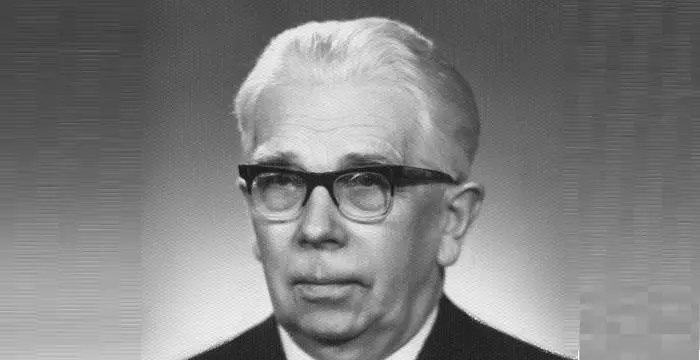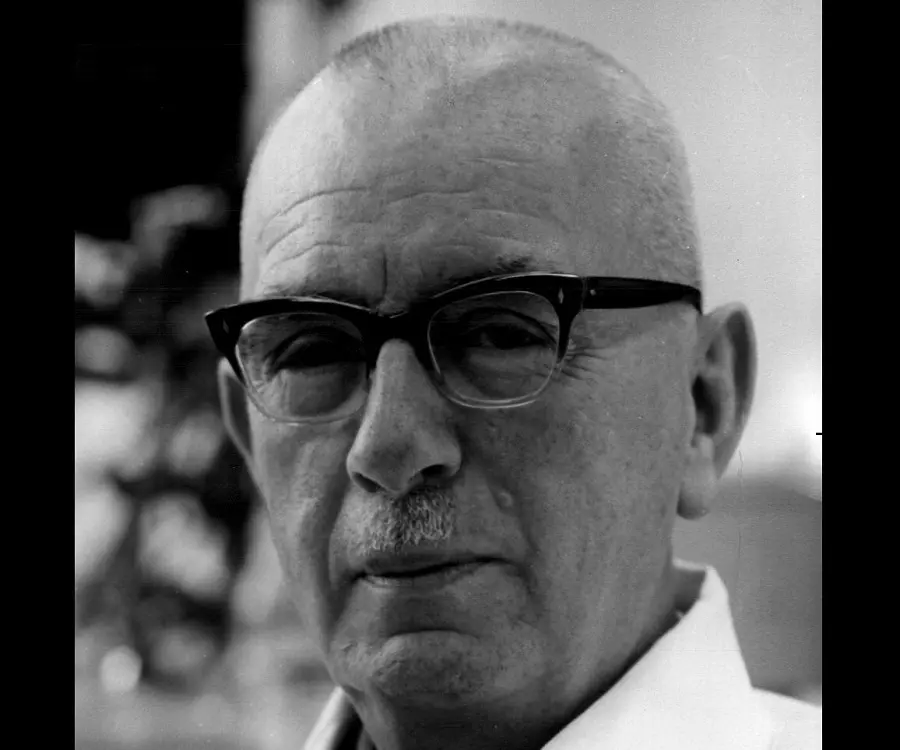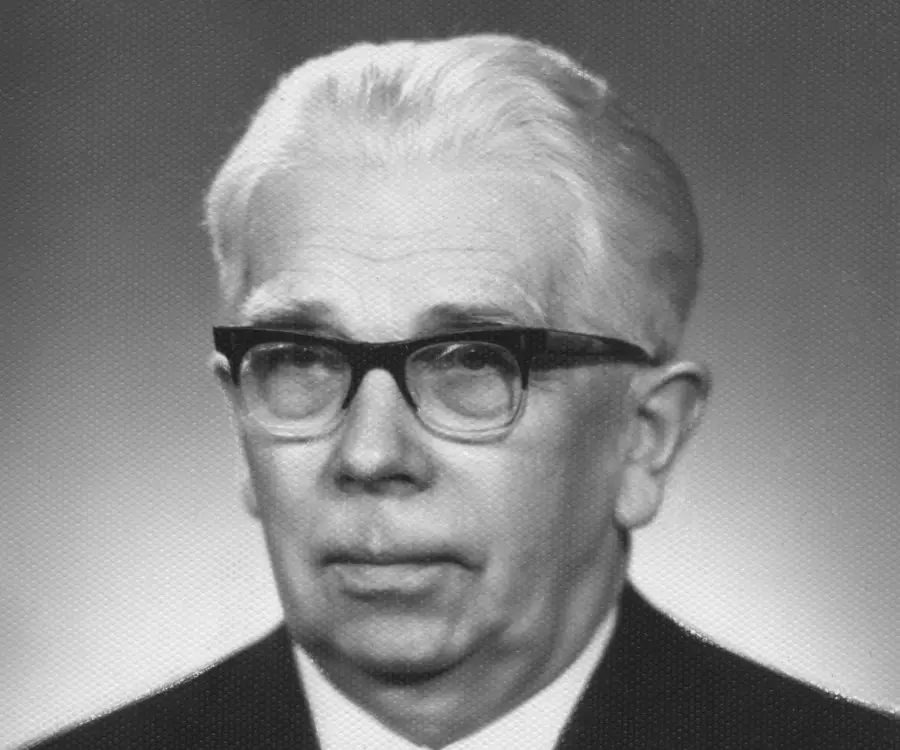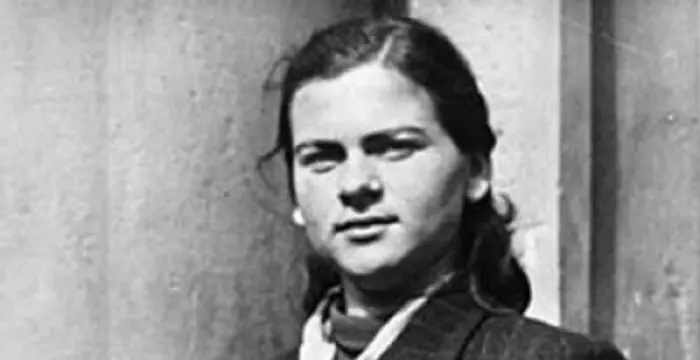
Karl Ziegler - Chemists, Family and Personal Life
Karl Ziegler's Personal Details
Karl Waldemar Ziegler was a German Chemist who won the 1963 Nobel Prize in Chemistry
| Information | Detail |
|---|---|
| Birthday | November 26, 1898 |
| Died on | August 12, 1973 |
| Nationality | German |
| Famous | Scientists, Chemists |
| Discoveries / Inventions |
|
| Birth Place | November 26, 1898, Helsa, Germany |
| Gender | Male |
| Sun Sign | Sagittarius |
| Born in | November 26, 1898, Helsa, Germany |
| Famous as | Chemist |
| Died at Age | 74 |
// Famous Scientists
Juliane Koepcke
Juliane Koepcke is a German-Peruvian biologist, who was the lone survivor among the 92 passengers and crew of the ill-fated LANSA Flight 508 that crashed in the Peruvian rainforest on 24 December 1971. Know more about her life in this biography.
Henry Cavendish
Henry Cavendish was a theoretical chemist and physicist, renowned for discovery of hydrogen and calculation of the mass of earth. To know more about his childhood, profile, timeline and career read on
Konstantin Tsiolkovsky
Konstantin Tsiolkovsky was a Russian rocket scientist and a pioneer of astronautics. This biography provides detailed information about his childhood, family, personal life, career, achievements, etc.
Karl Ziegler's photo
Who is Karl Ziegler?
Karl Waldemar Ziegler was a German Chemist, who, along with Giulio Natta, won the 1963 Nobel Prize in Chemistry; the duo was the awarded the Nobel Prize for their work on polymers. Born in Marburg, Karl Ziegler became interested in science early in his life and very soon began to read books beyond the school curricula. By the time he was old enough to enter the University of Marburg his knowledge on the subject became so extensive that he was allowed to skip two semesters. After earning his PhD in chemistry from the University of Marburg, he began his career as a Privatdozent at the same university. Within a short time he shifted first to the University of Frankfurt am Main and then to the University of Heidelberg and finally to the University of Halle. However, when the Second World War set in, carrying on fundamental research became difficult. Therefore, when he was offered the post of the Director at the Kaiser-Wilhelm Institute for Coal Research in Mülheim an der Ruhr, he took it up, but on his own terms. It was at Mülheim that he did his Nobel Prize winning work on syntheses of polyethylene. He also made many other discoveries, which not only earned him a great fame, but also a number of patents and consequently, considerable wealth.
// Famous Chemists
Henry Cavendish
Henry Cavendish was a theoretical chemist and physicist, renowned for discovery of hydrogen and calculation of the mass of earth. To know more about his childhood, profile, timeline and career read on
Walter Kohn
Nobel Laureate Walter Kohn was an Austrian-born American theoretical chemist and physicist. Check out this biography to know about his childhood, life, achievements, works & timeline.
Jabir Ibn Hayyan
Jabir Ibn Hayyan was a medieval era polymath. Check out this biography to know about his life, works and achievements.
Childhood & Early Life
Karl Ziegler was born on November 26, 1898, in Kassel, Germany, as the second son of Karl Ziegler, a Lutheran minister, and Caroline Helene Louise, née Rall.
Karl started his education at the Kassel-Bettenhausen elementary school in Helsa. In 1910, the family moved to Marburg and there he was admitted to the Real gymnasium.
While studying there, he came across an introductory textbook on physics. On reading it, he became very enthusiastic about science and began to read books outside his curriculum. He also started conducting experiments at home.
He was also encouraged in this by his father’s friends, many of whom were professors from the University of Marburg. By the time Karl reached his final year of the high school, he had gathered extensive knowledge in science and received the most outstanding student award.
In 1916, after passing out from school, Karl joined the University of Marburg with chemistry. However, because of his wide-ranging knowledge in the subject he was allowed to skip the first two semesters.
His college education was interrupted for a brief period when in 1918 he was inducted in the German army and deployed at the front to fight in the First World War. Fortunately, the war ended in the same year and he came back to resume his studies.
In 1919, he began his graduation work under Karl von Auwers; receiving his PhD in chemistry in 1920. His dissertation was titled ‘Studies on semibenzole and related links’.
He continued to work with Karl von Auwers at the University of Marburg. While doing his doctoral work, he had established that halochromic salts could be made from carbinols. Now, he began to synthesize similarly substituted free radicals and successfully prepared 1,2,4,5-tetraphenylallyl. The paper, submitted in 1923, qualified him as Privatdozent.
Career
In December 1923, Karl Ziegler became Privatdozent at the University of Marburg. At the same time, he continued his research work on free radicals with Karl von Auwers.
In 1925, he shifted to University of Frankfurt am Main, remaining there until 1926. Sometime in 1925, he also prepared pentaphenyl-cyclopentadienyl. The compound was more stable than tri-valent carbon free radicals, such as triphenylmethyl.
In 1926, Ziegler joined the University of Heidelberg as an assistant professor, remaining there till 1936. Here he started his experiments on carbon compounds, investigating into the stability of radicals on trivalent carbons. The work led him to study organometallic chemistry.
In 1927, he became a full professor at the University of Heidelberg. This was also the year when he found that when the olefin stilbene was added to an ethyl ether solution of phenylisopropyl potassium, the color changes from red to yellow abruptly.
Working on it, he also found that if more olefinic hydrocarbon butadiene was added to a solution of phenylisopropyl potassium a long-chain hydrocarbon can be obtained with the reactive organopotassium end still intact.
In 1930, Ziegler directly synthesized lithium alkyls and aryls from metallic lithium and halogenated hydrocarbons. Next in 1933, he published his first major paper on the syntheses of multi-membered ring systems. Titled, ‘Vielgliedrige Ringsysteme, it presented the fundamentals for the Ruggli-Ziegler dilution principle.
In 1936, he left Heidelberg and became a visiting professor at the University of Chicago for a short period. Later in the same year, he was appointed as the full professor and director of the Chemical Institute at the University of Halle.
Here he continued studying alkali organic compounds, free radicals, polymerization mechanisms, and ring syntheses. However, as the World War II set in 1939, the political as well as economic situation of the country became such that it became very difficult to carry on fundamental research.
In 1943, he was asked to succeed Franz Fischer as the Director of the Kaiser-Wilhelm-Institut fur Kohlenforschung (Kaiser-Wilhelm Institute for Coal Research) in Mülheim an der Ruhr. He accepted the offer on two conditions.
His first condition was that other than coal he should be allowed to work on all kinds of carbon compounds and the second condition was that he should be allowed to keep patent rights and royalties on new inventions. However, his family continued to reside at Halle.
From 1943 to 1945, Ziegler kept on commuting between Halle and Mülheim, simultaneously shouldering both the responsibilities. Later, as the war drew to an end and the Russian army began to move towards Halle, he shifted permanently to Mülheim.
In this post year period, the Kaiser Wilhelm Institute was renamed as Max-Planck-Institut fur Kohlenforschung (Max Planck Institute for Coal Research). Now his main work was to restore the chemical research in Germany. Concurrently, he also continued his own research work and made some major discoveries.
Concurrently, in 1949, he also helped to establish Gesellschaft Deutscher Chemiker (German Chemical Society) and served as its president for five years.
From 1954 to 1957, he served as President of Deutsche Gesellschaft für Mineralölwissenschaft und Kohlechemie (German Society for Petroleum Science and Coal Chemistry).
He retired from Max-Planck-Institut fur Kohlenforschung in 1969.
Major Works
He was intsrumental in expanding the scientific knowledge of and the technical development of new synthetic materials. His work on organometallic compounds which led to new polymerization reactions paved the way for new and highly useful industrial processes.
Awards & Achievements
In 1963, Ziegler received the Nobel Prize in Chemitry for his “discoveries in the field of the chemistry and technology of high polymers. He shared the prize with Giulio Natta, who had used Ziegler’s techniques to produce first isotactic polypropylene.
In addition to that, he had received several other medals and prizes, among which, Liebig Medal (1935), War Merit Cross 2nd Class (1940) and Werner von Siemens Ring (1961) were most significant.
In 1971, he became a Foreign Member of the Royal Society (England).
Personal Life & Legacy
In 1922, Karl Ziegler married Maria Kurtz. They had two children. His son, Erhart Ziegler, was a physicist and patent attorney. His daughter, Marianna Ziegler Witte, was a doctor of medicine.
Ziegler owned many patents, which made him very rich. Using part of his wealth (40 million deutsche marks), he later set up the Ziegler Fund with the aim of supporting the institute's research
He was also a collector of art and liked travelling around. He especially liked going on cruising.
In 1972, he chartered a cruise and went on eclipse viewing. He became ill on this trip and died a year later on August 12, 1973 in Mülheim, Germany.
Today, a number of scientific processes bear his name. Among them, Ziegler–Natta catalyst, Ziegler process, Wohl–Ziegler bromination and Thorpe–Ziegler reaction are most significant.
// Famous German peoples
Jordan Carver
Jordan Carver is a famous German model. Let’s take a close look at her personal life, including her age, career, net worth, achievements and some fun facts.
Jürgen Klopp
Jürgen Klopp is a German football manager, and a former professional football player. Check out this biography to know more about his childhood, family, personal life, etc.
Irma Grese
Irma Grese was a notorious German Nazi concentration camp guard during the Second World War. This biography profiles her childhood, life, horrifying acts, death and other facts.
Karl Ziegler's awards
| Year | Name | Award |
|---|---|---|
Other | ||
| 0 | Nobel Prize in Chemistry | |
Karl Ziegler biography timelines
- // 26th Nov 1898Karl Ziegler was born on November 26, 1898, in Kassel, Germany, as the second son of Karl Ziegler, a Lutheran minister, and Caroline Helene Louise, née Rall.
- // 1910Karl started his education at the Kassel-Bettenhausen elementary school in Helsa. In 1910, the family moved to Marburg and there he was admitted to the Real gymnasium.
- // 1916In 1916, after passing out from school, Karl joined the University of Marburg with chemistry. However, because of his wide-ranging knowledge in the subject he was allowed to skip the first two semesters.
- // 1918His college education was interrupted for a brief period when in 1918 he was inducted in the German army and deployed at the front to fight in the First World War. Fortunately, the war ended in the same year and he came back to resume his studies.
- // 1919 To 1920In 1919, he began his graduation work under Karl von Auwers; receiving his PhD in chemistry in 1920. His dissertation was titled ‘Studies on semibenzole and related links’.
- // 1922In 1922, Karl Ziegler married Maria Kurtz. They had two children. His son, Erhart Ziegler, was a physicist and patent attorney. His daughter, Marianna Ziegler Witte, was a doctor of medicine.
- // 1923He continued to work with Karl von Auwers at the University of Marburg. While doing his doctoral work, he had established that halochromic salts could be made from carbinols. Now, he began to synthesize similarly substituted free radicals and successfully prepared 1,2,4,5-tetraphenylallyl. The paper, submitted in 1923, qualified him as Privatdozent.
- // Dec 1923In December 1923, Karl Ziegler became Privatdozent at the University of Marburg. At the same time, he continued his research work on free radicals with Karl von Auwers.
- // 1926 To 1936In 1926, Ziegler joined the University of Heidelberg as an assistant professor, remaining there till 1936. Here he started his experiments on carbon compounds, investigating into the stability of radicals on trivalent carbons. The work led him to study organometallic chemistry.
- // 1927In 1927, he became a full professor at the University of Heidelberg. This was also the year when he found that when the olefin stilbene was added to an ethyl ether solution of phenylisopropyl potassium, the color changes from red to yellow abruptly.
- // 1930 To 1933In 1930, Ziegler directly synthesized lithium alkyls and aryls from metallic lithium and halogenated hydrocarbons. Next in 1933, he published his first major paper on the syntheses of multi-membered ring systems. Titled, ‘Vielgliedrige Ringsysteme, it presented the fundamentals for the Ruggli-Ziegler dilution principle.
- // 1936In 1936, he left Heidelberg and became a visiting professor at the University of Chicago for a short period. Later in the same year, he was appointed as the full professor and director of the Chemical Institute at the University of Halle.
- // 1939Here he continued studying alkali organic compounds, free radicals, polymerization mechanisms, and ring syntheses. However, as the World War II set in 1939, the political as well as economic situation of the country became such that it became very difficult to carry on fundamental research.
- // 1943In 1943, he was asked to succeed Franz Fischer as the Director of the Kaiser-Wilhelm-Institut fur Kohlenforschung (Kaiser-Wilhelm Institute for Coal Research) in Mülheim an der Ruhr. He accepted the offer on two conditions.
- // 1943 To 1945From 1943 to 1945, Ziegler kept on commuting between Halle and Mülheim, simultaneously shouldering both the responsibilities. Later, as the war drew to an end and the Russian army began to move towards Halle, he shifted permanently to Mülheim.
- // 1949Concurrently, in 1949, he also helped to establish Gesellschaft Deutscher Chemiker (German Chemical Society) and served as its president for five years.
- // 1954 To 1957From 1954 to 1957, he served as President of Deutsche Gesellschaft für Mineralölwissenschaft und Kohlechemie (German Society for Petroleum Science and Coal Chemistry).
- // 1963In 1963, Ziegler received the Nobel Prize in Chemitry for his “discoveries in the field of the chemistry and technology of high polymers. He shared the prize with Giulio Natta, who had used Ziegler’s techniques to produce first isotactic polypropylene.
- // 1969He retired from Max-Planck-Institut fur Kohlenforschung in 1969.
- // 1971In 1971, he became a Foreign Member of the Royal Society (England).
- // 1972 To 12th Aug 1973In 1972, he chartered a cruise and went on eclipse viewing. He became ill on this trip and died a year later on August 12, 1973 in Mülheim, Germany.
// Famous Sagittarius Celebrities peoples
Billie Eilish
Billie Eilish Pirate Baird O’Connell is an American singer and songwriter. Check out this biography to know about her childhood, family, personal life, birthday, etc.
Jacelyn Reeves
Jacelyn Reeves is a former flight attendant who once had a fling with Clint Eastwood. Check out this biography to know about her birthday, childhood, family life, achievements and fun facts about her.
Edmund Kemper
Edmund Kemper is a convicted serial killer from America who murdered ten people. Check out this biography to know about his childhood, life, crimes and other facts about him.
Pietro Boselli
Pietro Boselli is an Italian model, engineer, teacher, and fitness athlete who became famous as the ‘world’s sexiest math teacher’. Check out this biography to know about his birthday, childhood, family life, achievements and fun facts about him.
Niqoles Heard
Lil Niqo is an American rapper and musical artist. Let’s take a look at his family and personal life including age, date of birth, net worth, girlfriends, and fun facts.
Ted Nugent
Ted Nugent is a hard rock musician known for his hits ‘Stranglehold’ and ‘Cat Scratch Fever’. This biography of Ted Nugent provides detailed information about his childhood, life, achievements, works & timeline.
Karl Ziegler's FAQ
What is Karl Ziegler birthday?
Karl Ziegler was born at 1898-11-26
When was Karl Ziegler died?
Karl Ziegler was died at 1973-08-12
Which age was Karl Ziegler died?
Karl Ziegler was died at age 74
Where is Karl Ziegler's birth place?
Karl Ziegler was born in November 26, 1898, Helsa, Germany
What is Karl Ziegler nationalities?
Karl Ziegler's nationalities is German
What is Karl Ziegler's inventions/discoveries?
Ziegler–Natta Catalyst was invented (or discovered) by Karl Ziegler
What is Karl Ziegler's sun sign?
Karl Ziegler is Sagittarius
How famous is Karl Ziegler?
Karl Ziegler is famouse as Chemist















